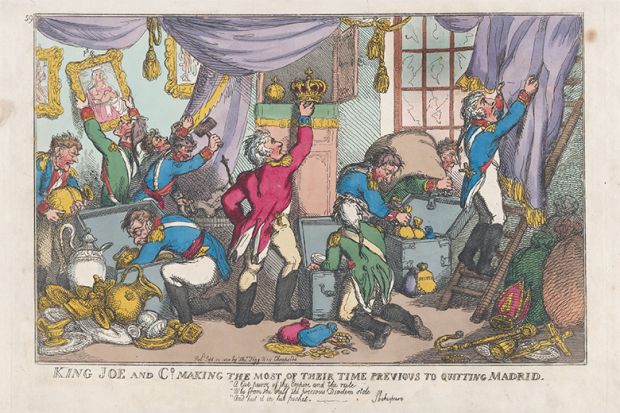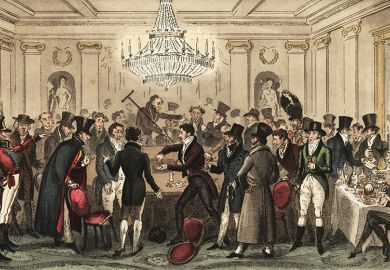Since the millennium, London has taken over from New York as the centre of the international art market – or so it has been claimed. According to recent scholarship, a comparable shift took place during the late 18th and early 19th centuries, when London supplanted Paris as the primary hub of the European trade in paintings and other works of art for several decades. Even today, the London art market still testifies to the impact of this pivotal period. It was in 1766, for example, that James Christie held his first sale at premises on Pall Mall, thereby establishing the auction house that remains one of London’s principal venues for selling art, now housed a short distance from its original location.
As today, the growing importance of London to the international art market in the period around 1800 can be attributed to the impact of larger political and economic shifts. The French Revolution and the wars that followed are believed to have given a boost to the London art market by bringing about the break-up of royal, aristocratic and ecclesiastical collections across western Europe. The most famous example is the fate of the Orléans collection, which previously adorned the Palais Royal in Paris; having been sold off by its princely owner in 1792, it was transported across the Channel to London, where it was dispersed in a series of sales.
The book under review complicates this broad-brush narrative by investigating the precise mechanisms by which London achieved market dominance during these years. Several essays draw on digital resources, most notably the Getty Provenance Index, which provides online access to a vast database of records of historic art sales. The evidence shows, for example, that prices on the French market plummeted after 1780 while English prices rose, helping to explain why art dealers tended to buy in Paris and sell in London. It also belies long-standing claims that the arrival of the Orléans collection engendered a new taste for grand-manner Italian painting in England; there, as elsewhere, undemanding Dutch pictures dominated the market.
The difficulty of drawing clear-cut conclusions from this kind of data is also apparent, however. Most of the essays adopt the more traditional approach of presenting a case study through a range of archival and printed sources. One, for example, discusses the strategies that Christie deployed in order to lure both buyers and sellers to his auction room, although here a few statistics might actually help. Others, however, examine much less familiar topics, such as the peripatetic career of the Paris-based dealer Pierre-Joseph Lafontaine, who continued to operate across the Channel, even selling to the Prince Regent, almost regardless of Britain’s blockade of Napoleonic Europe.
What the book as a whole succeeds in demonstrating is that many features of the modern art market were already present around 1800. They include the prominent role played by highly expert dealers and other middlemen; the adoption of sophisticated marketing techniques; the formation of art collections as a speculative venture; and the establishment of galleries mixing private enterprise with public benefit. Although much more no doubt remains to be discovered, this makes a very valuable contribution.
Emma Barker is senior lecturer in art history at The Open University.
London and the Emergence of a European Art Market, 1780-1820
Edited by Susanna Avery-Quash and Christian Huemer
Getty, 304pp, £47.99
ISBN 9781606065952
Published 6 August 2019
POSTSCRIPT:
Print headline: Becoming a dealer’s paradise
Register to continue
Why register?
- Registration is free and only takes a moment
- Once registered, you can read 3 articles a month
- Sign up for our newsletter
Subscribe
Or subscribe for unlimited access to:
- Unlimited access to news, views, insights & reviews
- Digital editions
- Digital access to THE’s university and college rankings analysis
Already registered or a current subscriber?






